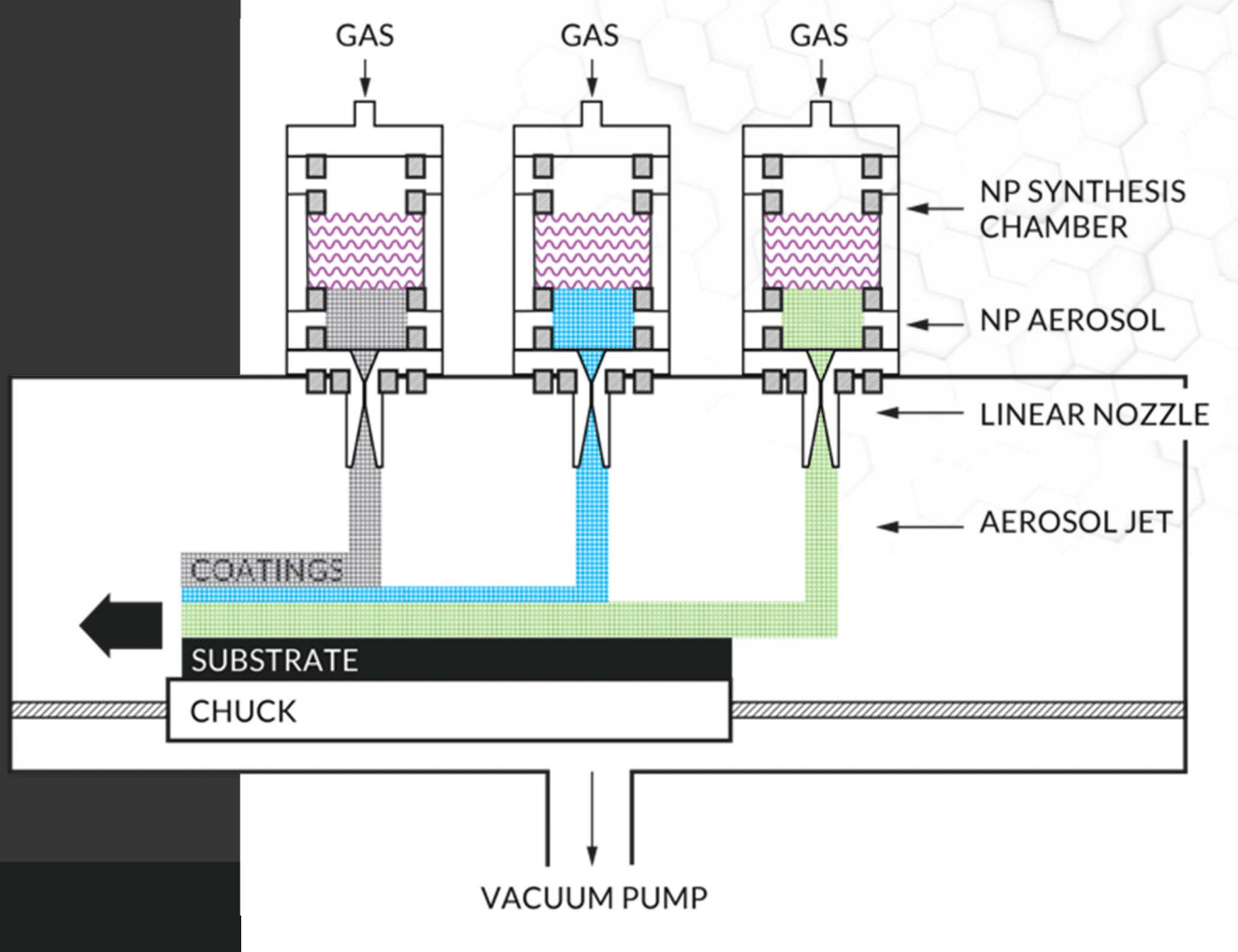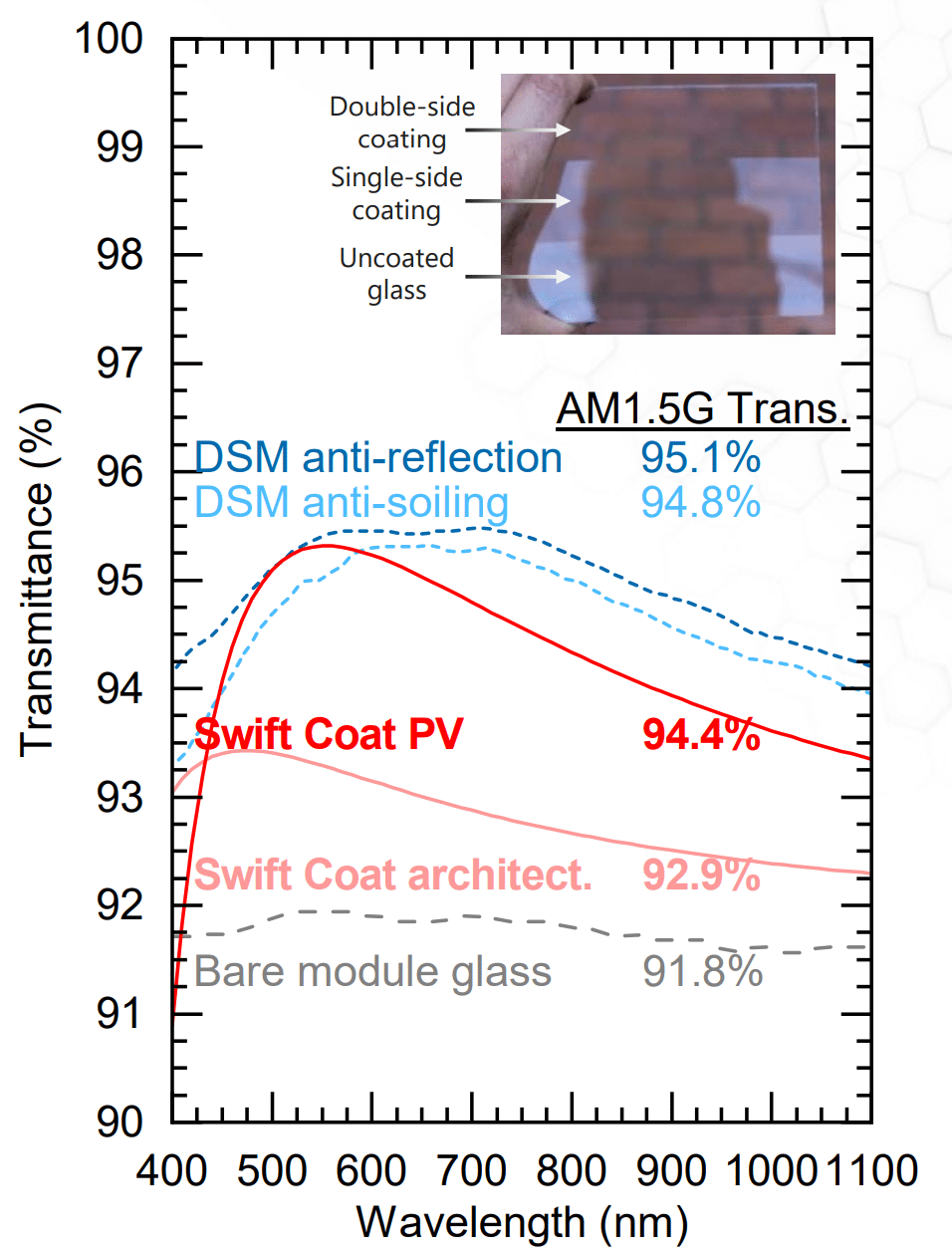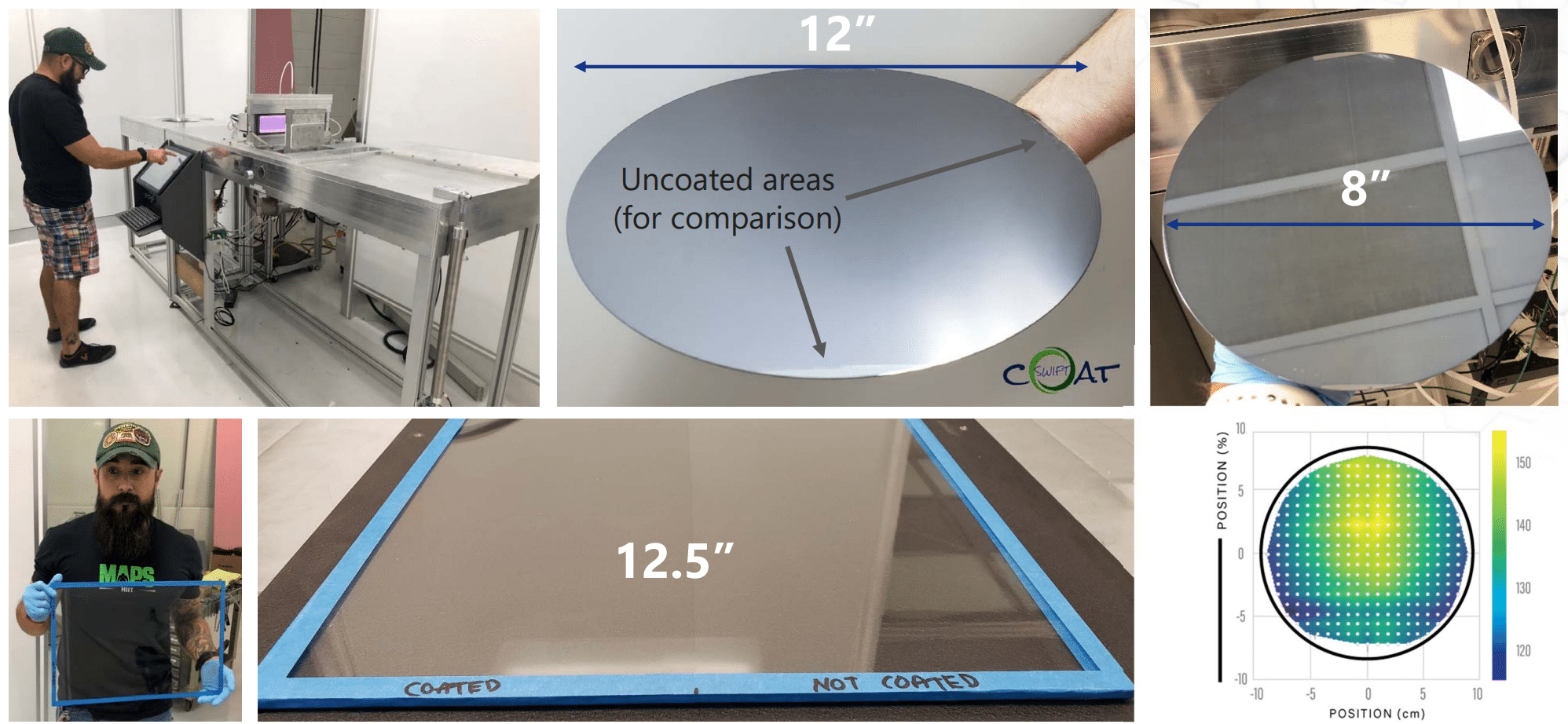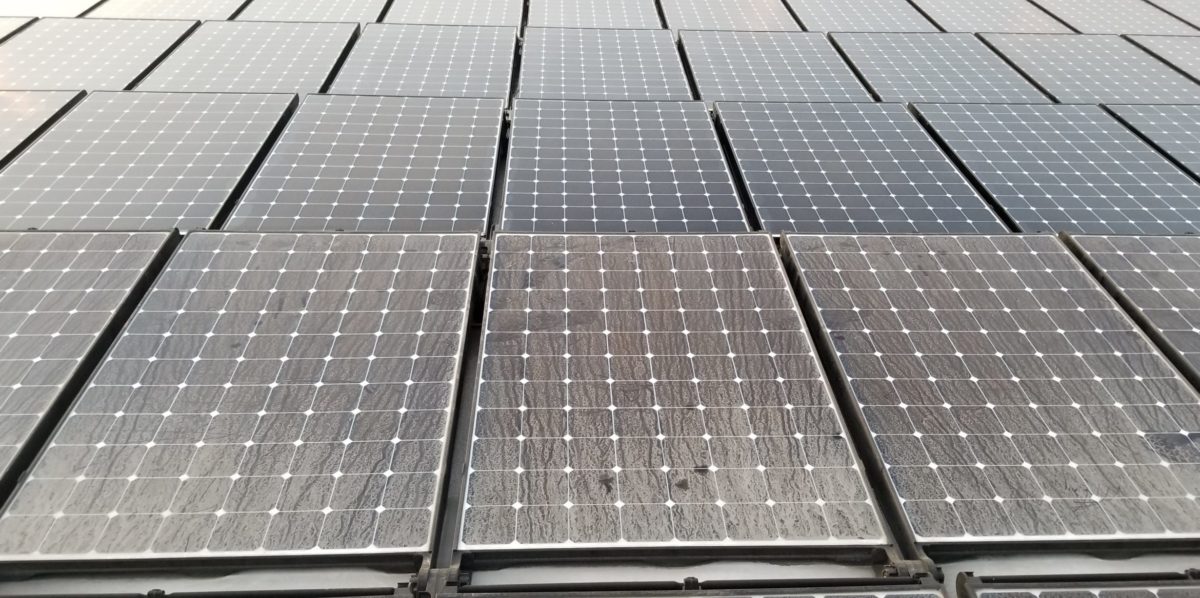Swift Coat has won a $1 million award from the U.S. Department of Energy’s Solar Energy Technologies Office to develop a coating that both deflects dirt as well breaks down organic compounds. The group hopes to tap into over a decade of experience in the architectural glass industry using these technologies, and have units in the field by the end of the 18-month program.

The image above represents the gas deposition process by which coatings are applied, which they call “aerosol impact-driven assembly.” Gas deposition is how First Solar manufactures its thin film products, and how perovskites might be manufactured. For a single-module-wide coating line at 10 meters-per-minute, with normal uptimes, each machine containing Swift Coat’s hardware would coat 300 60-cell solar modules per hour.
The company will apply two coatings – first, the antireflection coating that already exists on all standard solar modules. The second coating that Swift Coat is aiming to incorporate is photocatalytic titania (titanium dioxide) – which actively decomposes soilants and maintains a hydrophilic surface. From co-founder Zachary Holman:
Titania-containing coatings have been used for self-cleaning—with 15 years of field data—in the residential windows market, but those coatings have much too high reflectance to be considered for PV module glass. Swift Coat’s innovation is a coating with high photocatalytic activity and high transmittance, plus the requisite durability for module lifetimes.
The “titania-coating” material is titanium dioxide. When this material absorbs UV light a chemical reaction occurs which breaks down organic soilants. As these organic are broken down, inorganics such as dirt, which are often bound to surfaces such as module glass by organics, are released. And last, the coatings applied make the module surface hydrophilic so that rain or dew events rinse away the now loosened inorganics.

According to Swift Coat, these types of soilant-eating coatings have logged 15 years of field data. However, the process by which these products are applied to the glass isn’t viable for solar modules because they have a high refractive index, and thus reflect light. Swift Coat’s specific innovation is to maintain the photocatalytic self-cleaning effect (the titanium-oxide UV process described above) of these products while matching the anti-reflection performance of coatings common in the industry.
The go-t0-market plan is to develop tools and material for the industry. From Matthew Firth, Swift Coat’s CFO:
Our business model is not to manufacture and sell the whole coating machine to our customers, who are glass coaters or module manufacturers, but rather to manufacture and sell our coating “sources” — hardware that can be integrated into any vacuum coater — and to also provide our customers with the precursor materials that are fed into these sources to create the coatings.
The company didn’t release pricing information but suggests that costs will be similar to standard anti-reflective coating materials and processes. Swift Coat expects to offer a product that customers could integrate into the manufacturing lines by the end of 2021.

This content is protected by copyright and may not be reused. If you want to cooperate with us and would like to reuse some of our content, please contact: editors@pv-magazine.com.









By submitting this form you agree to pv magazine using your data for the purposes of publishing your comment.
Your personal data will only be disclosed or otherwise transmitted to third parties for the purposes of spam filtering or if this is necessary for technical maintenance of the website. Any other transfer to third parties will not take place unless this is justified on the basis of applicable data protection regulations or if pv magazine is legally obliged to do so.
You may revoke this consent at any time with effect for the future, in which case your personal data will be deleted immediately. Otherwise, your data will be deleted if pv magazine has processed your request or the purpose of data storage is fulfilled.
Further information on data privacy can be found in our Data Protection Policy.